A beginner's guide to guitar synth pedals
Don't know your VCO from your VCA? Get up to speed with our guitar synth guide
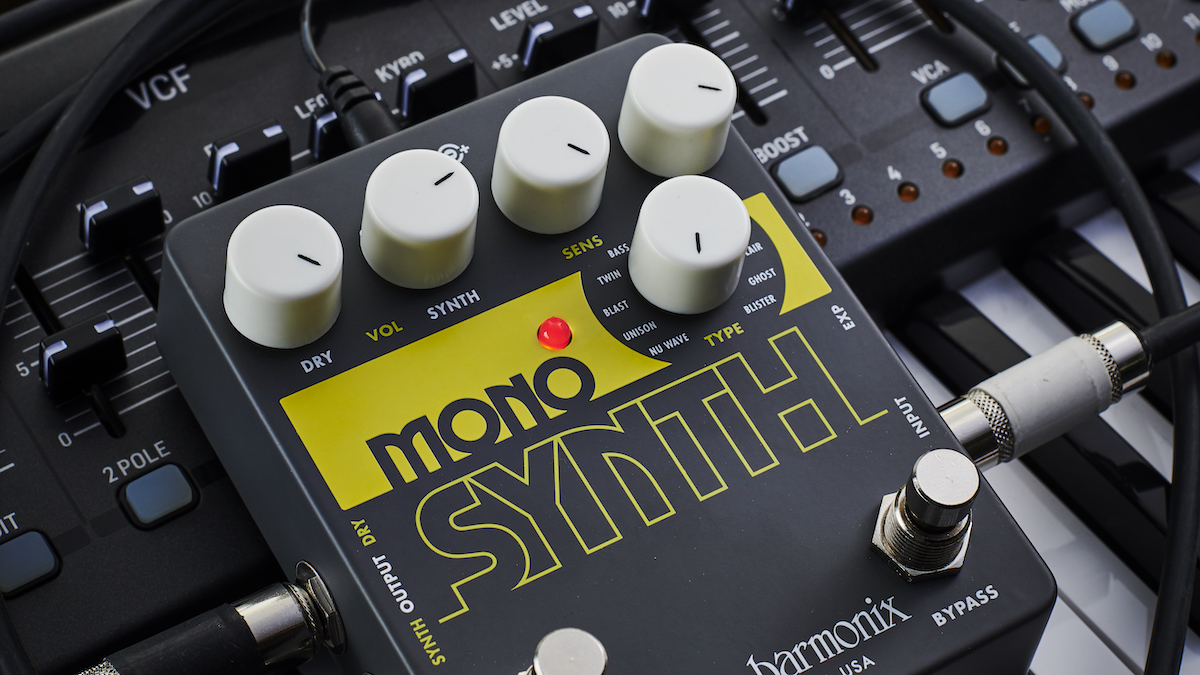
If you're a heavy effects user, you might wonder, can I turn my guitar into a synthesizer? The simple answer is yes, but it also depends what kind of sound you're after - a vintage mono or polysynth? A replica of a piano? A mid ‘90s ambient pad? An arpeggiator?
This isn't a new conversation, with guitar synthesis having its first heyday in the ‘80s and a drip of interested users since. While many manufacturers gave up on the technology, synth giants Roland have brought out a new guitar synth every few years, often based around their proprietary GK pickup system.
The latest generation of entry-to-mid level DSP options eliminate the need for this extra hardware. This means that guitar synthesis is more accessible than ever before. In this guide we’ll take a look at the how they work in a guitar context, the power users of the guitar world, and the synth pedals you need to check out.
How to use a synth pedal
MusicRadar's got your back
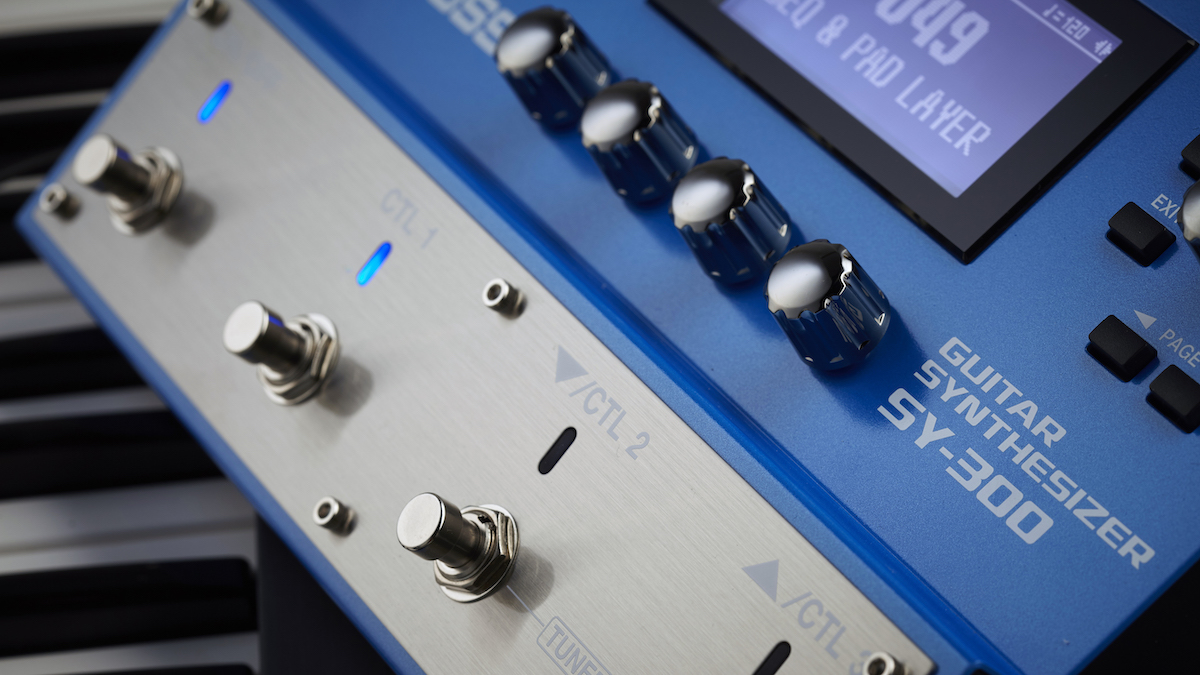
It used to be the case that guitar synthesis required not only a basic knowledge of synthesis and MIDI, but also a hex pickup, proprietary cable and floor unit. One of the main reasons for this was isolating the played root note from the overtone-heavy guitar signal, in order to make it track at all.
Luckily, there are now units that can work with a normal guitar signal, with no extra equipment or configuration. The only limitation there is that they tend to only work and track well if they are the first pedal in your chain. Set up correctly, even cheaper modern synth pedals track better than top-end vintage gear.
The benefit of these new, simpler units is that you can get up and running quickly, regardless of whether you understand synthesis or not. The downside is that these pedals are less deep, with fewer options and avenues for sound design and customisation.
The main bit of theory that's worth knowing is the difference between a monosynth and a polysynth. Simply, a monosynth has one synth voice - which means it can only sound one note at a time. A polysynth… well, you guessed it. Typically the number of voices is specified for a polysynth, but as the guitar has only six strings, the practical maximum is six.
If you do understand synth voices and oscillators, you're likely to find that more streamlined units are restrictive compared to the options available on even a simple keyboard synth.
For more complex routing, for example MIDI-through to control other devices, then you're going to need a hex pickup and a more expensive unit. These have the benefit of complex options - often each string is on a separate MIDI channel, so can be used to trigger different synth voices. This could be a pad on the lowest string, and a lead sound on higher ones.
The most sophisticated pedals are made by Roland, and they make a dedicated GK hex pickup you can attach to your guitar. Some manufacturers like Fender and Strandberg even make guitars with a built-in hex pickup.
Finally, it's worth noting that when people talk about synths, they tend to mean monosynths, polysynths, or sample-based synths. However, it's also possible to create synthesised sounds using a delay buffer, by a technique known as granular synthesis.
Notable users
There are many guitarists that have dabbled in guitar synthesis over the years. It's fair to say that most who have gone completely down the rabbit hole eventually switch to keyboard synths. Indeed, some players, like Fripp and Bellamy, already were piano and keyboard players. Maybe the new generation of guitar synths will change that, but in any case, here's some guitar synth users you'll have heard of.
Matt Bellamy, Muse
Hear it on: Origin of Symmetry
Gear used: Roland VG-88
Matt Bellamy pushed the limits of his guitar sound using a flagship Roland guitar synth, the VG-88. He controlled it using a Manson guitars custom model with a built-in Roland GK-2 pickup. The most dramatic use of the pedal is during the horn solo - actually the synth - in Darkshines. It appears elsewhere on the record too, like in the pulsing string pads in the chorus of Plug In Baby.
Jimmy Page, solo
Hear it on: Death Wish II
Gear used: Roland GR-505
After the death of John Bonham and the end of Led Zeppelin, Jimmy Page's first project was the Death Wish soundtrack. For this, he pushed himself out of his comfort zone, experimenting with new gear and guitars, including guitar synthesis. He would continue to experiment in the years following, appearing in a number of Roland print ads.
Andy Summers, The Police
Hear it on: Zenyattà Mondatta
Gear used: Roland GR-300, Roland G-808
Andy Summers had been using Roland guitar synthesisers for some time before they made it onto a Police record. During the writing and recording for Zenyattà Mondatta, he found himself needing a different approach for the middle-eight in Don't Stand So Close To Me. He reached for the Roland, and the rest is history.
Robert Fripp/Adrian Belew, King Crimson
Hear it on: Discipline
Gear used: Roland GR-300, Roland GR-700
Both Robert Fripp and Adrian Belew were early-adopters of guitar synthesis, although many of the tones they used are still guitar-like. Their synths weren't MIDI, so they augmented them with arrays of external effects, part of Fripp's 'Frippertronics'. Despite success with mono synth sounds, Fripp was skeptical about the overtones of the instrument making it as natural a fit for synth as the keyboard, saying in a mid-’80s interview, "my feeling is that the guitar may well never be the instrument to trigger a synthesizer."
Synth pedal recommendations
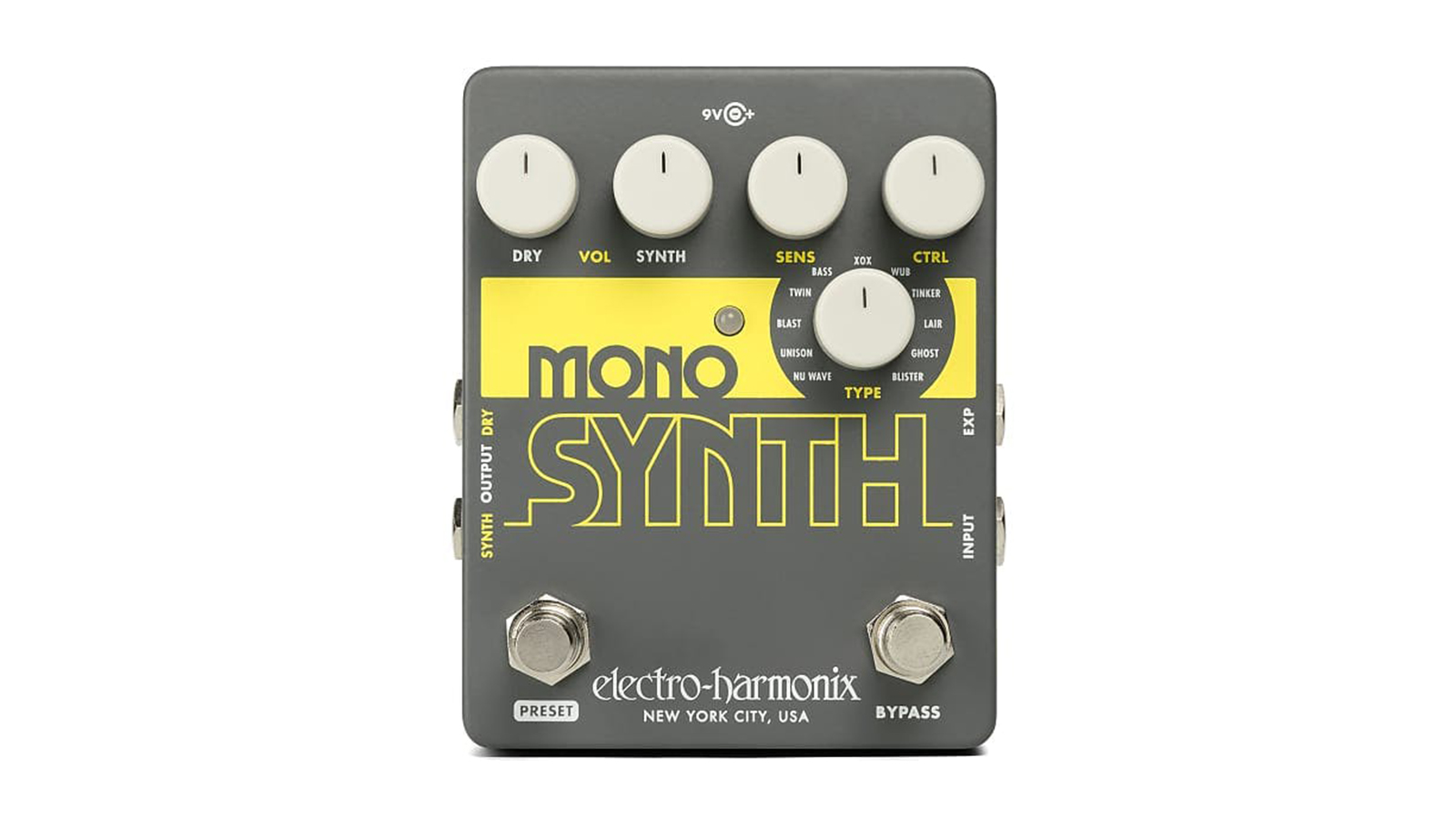
1. Electro-Harmonix Mono Synth
Specifications
Reasons to buy
Reasons to avoid
The EHX Mono Synth takes a bit of dialling in with the Sensitivity knob before it responds perfectly, but after that, it's plain sailing for simple, single-voice synth parts. There are eleven preset monosynth sounds, with one controllable parameter for each. This isn't the most flexible configuration, but for live use, especially for fat bass sounds, it's usually more than adequate. Usefully, it has dedicated wet and dry outputs, in case you want to send the synth straight to the PA speaker at a gig.

2. Mooer E7
Specifications
Reasons to buy
Reasons to avoid
The E7 cuts a simple synth back to the bare essentials. Astonishingly, not only does it not require a hex pickup, but it is also polyphonic. As the name suggests, it has seven presets, and each has two filter parameters as well as an attack control, meaning you can create slower, pad-like fades. Each preset also has an arpeggiator, although its flexibility is limited. The sounds are on the cheesier end of the spectrum, but when combined with some delay and reverb can generate good enough pads for live use.
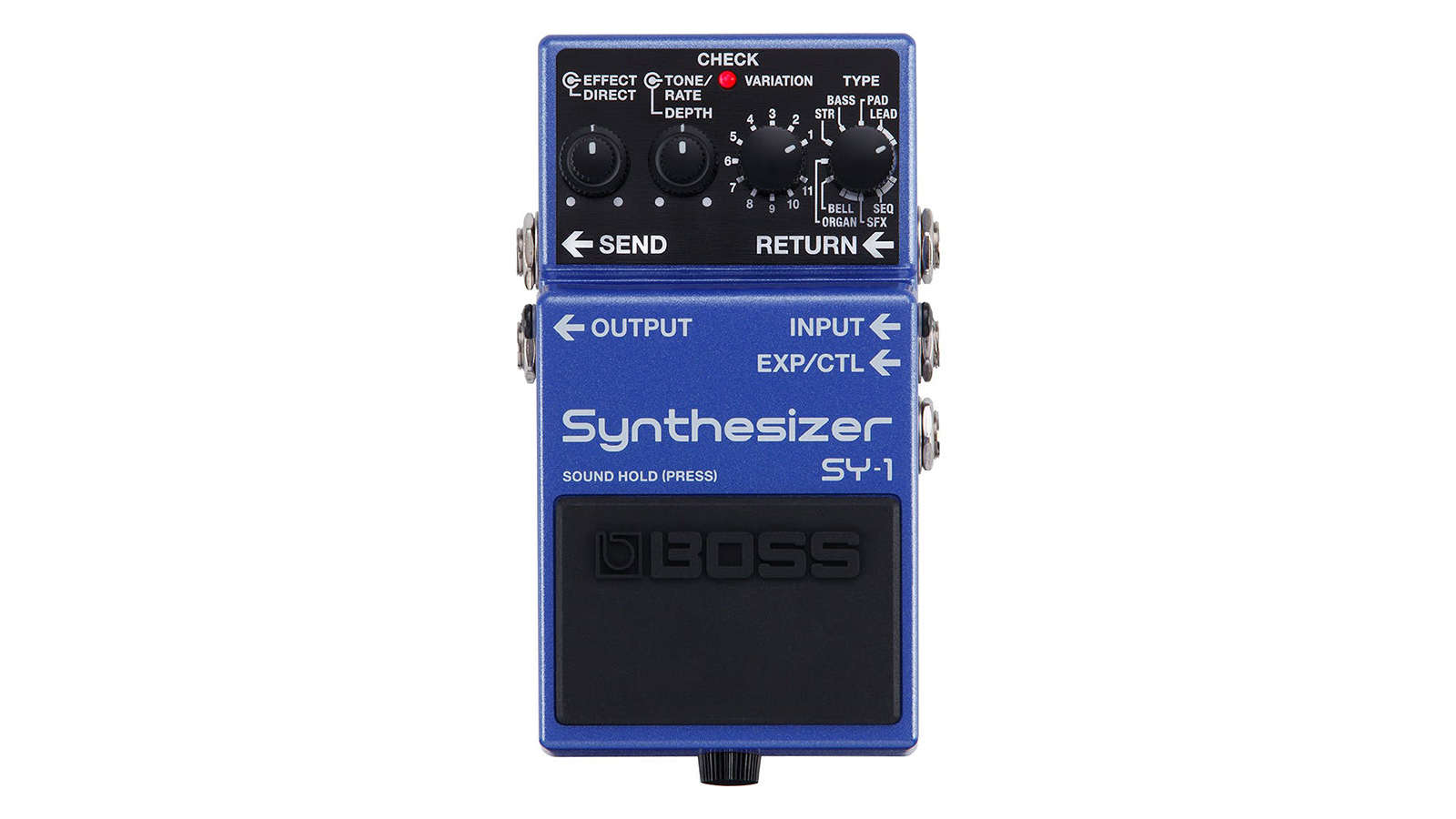
3. Boss SY-1
Specifications
Reasons to buy
Reasons to avoid
The SY-1 takes the technology from the larger SY-300 and streamlines it down to the size of a Boss compact pedal. Compared to the SY-300, there's no voice-building available. Instead, the SY-1 has 128 presets that are selectable by a bank and mode control.
Apart from that, the only options available on the front panel are a mix control and tone, rate and depth controls depending on the patch. Despite this very simple interface, for live use the SY-1 does a great job at simple leads and pads. Holding the footswitch results in infinite sustain, and it can also be expanded with an expression pedal or additional Boss expansion switches.
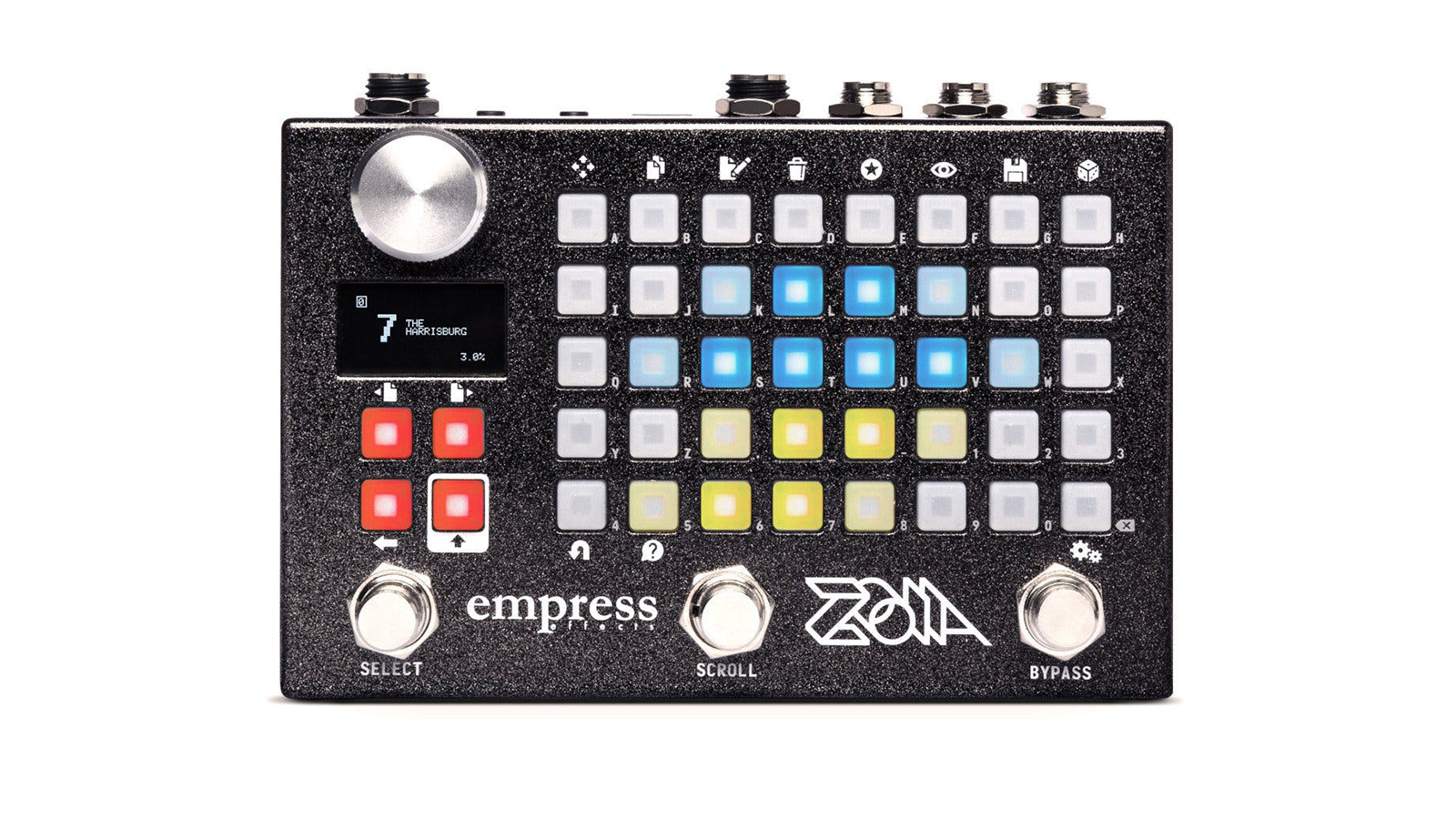
4. Empress Zoia
Specifications
Reasons to buy
Reasons to avoid
Given how complex and esoteric it is, it's amazing that the Zoia exists. Being able to program pretty much any effect and pair that with filters and oscillators means that the Zoia can be used for some traditional synth sounds, but more interestingly, it can be used for sampling and granular synthesis.
Granular synthesis is where new sounds are created out of small samples of an audio source. It's one of the most interesting synthesis techniques for complex sound design. There are other pedals in this area by Red Panda and Hologram Electronics, but few with the flexibility or intuitive control - once set up, at least - as the Zoia.
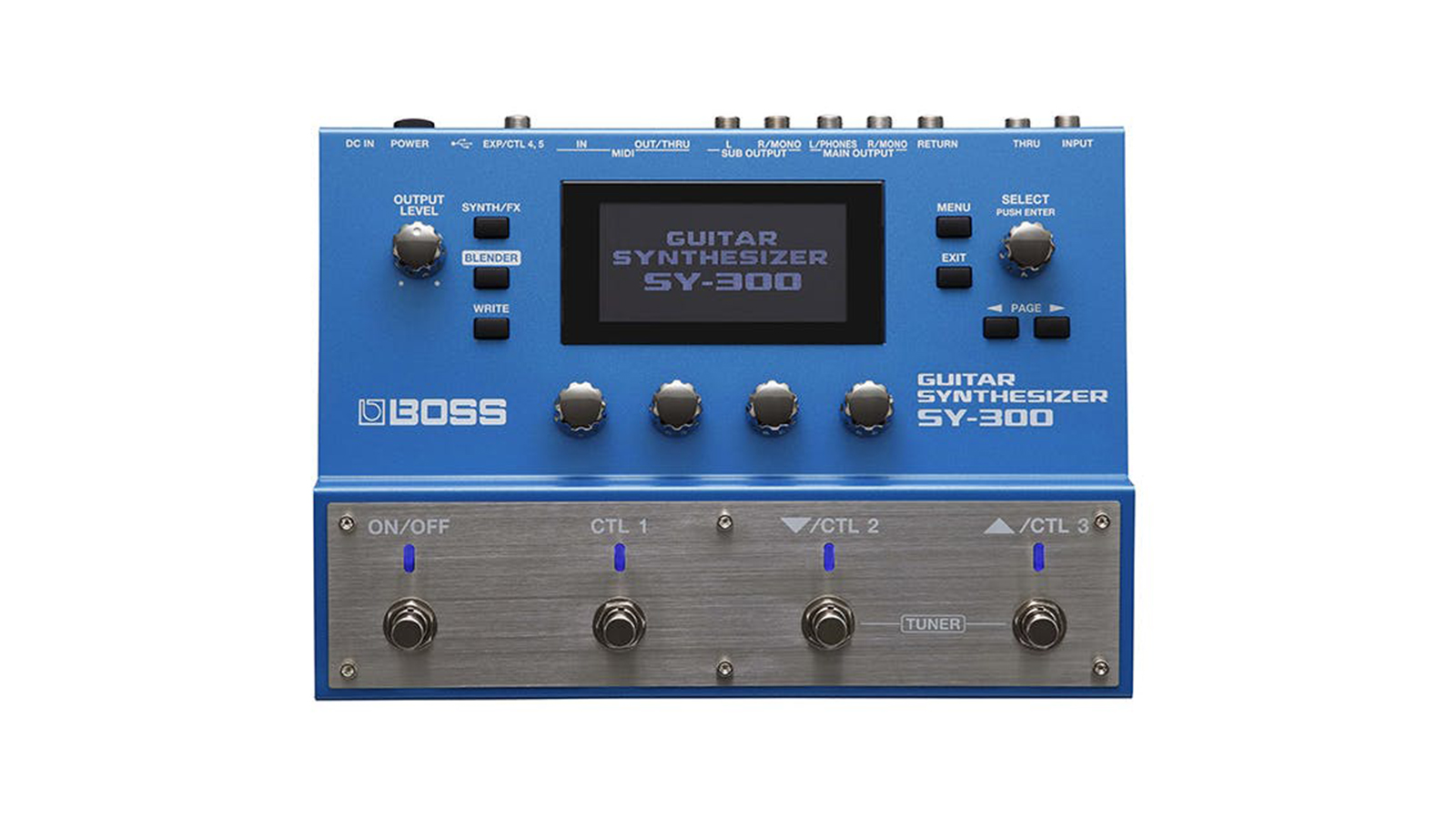
5. Boss SY-300
Specifications
Reasons to buy
Reasons to avoid
When Boss announced the SY-300, it caused quite a stir. Not requiring Roland's GK pickup system had people asking - was this the end of dedicated hex pickups? While the SY-300 delivered on ease of use and packed some fantastic synth sounds, it ultimately didn't kill off the GK for power users. Instead the SY-300 is best thought of as a mid-range workhorse for a guitarist that wants an extensible vintage-voiced synth option, but doesn't need to integrate with a more complicated MIDI setup.
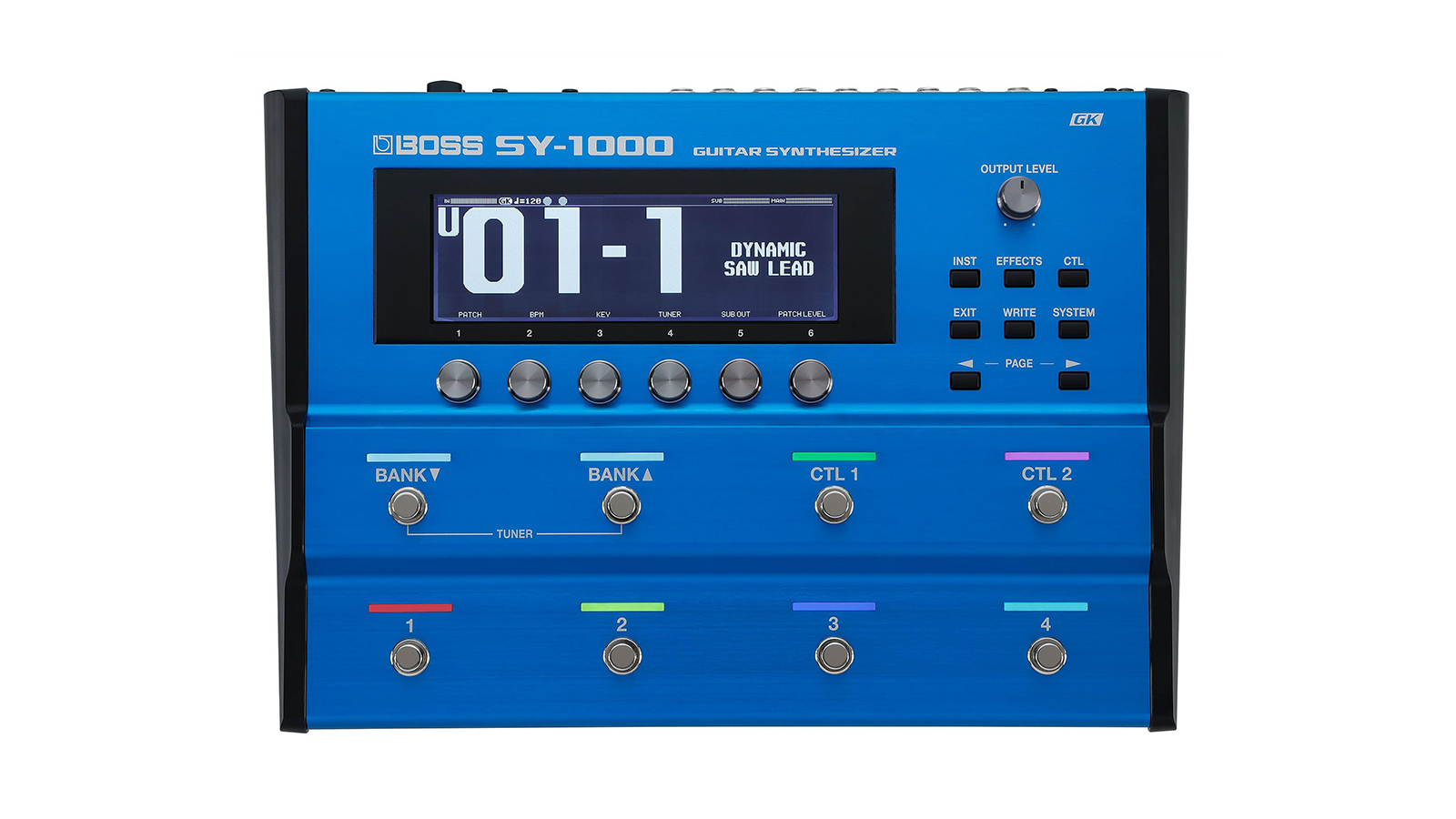
6. Boss SY-1000
Specifications
Reasons to buy
Reasons to avoid
If you want true MIDI I/O thru and control of additional devices and triggers, then the SY-1000 is pretty much the only game in town. Somewhere between one of Roland's flagship synths and the Boss GT-1000 guitar effects unit, the SY-1000 is a deep and complex sound design tool.
Luckily it can be controlled and edited with the Boss Tone Studio software, making it just that bit more manageable. That said, while intimidating, the front panel is a full, if complex, editor for the synth patches.
Although on paper it can be run without the GK hex pickup, at that point you're basically using it as an SY-300 with added effects. To justify the extra outlay, you're likely to be a player that needs the additional features, sound design and editing the SY-1000 offers.
Finally, the ability to change the envelope of the trigger sound means that you can make a better approximation of a synthesiser sound. Other guitar synths always sound a little off, thanks to only relaying the distinctive envelope of the source guitar.
Related buyer’s guides
- 20 of the best cheap synthesizers available today
- Best pedalboards for guitarists
Want all the hottest music and gear news, reviews, deals, features and more, direct to your inbox? Sign up here.
Alex Lynham is a gear obsessive who's been collecting and building modern and vintage equipment since he got his first Saturday job. Besides reviewing countless pedals for Total Guitar, he's written guides on how to build your first pedal, how to build a tube amp from a kit, and briefly went viral when he released a glitch delay pedal, the Atom Smasher.
